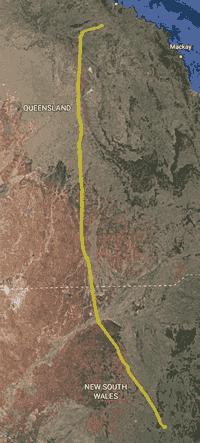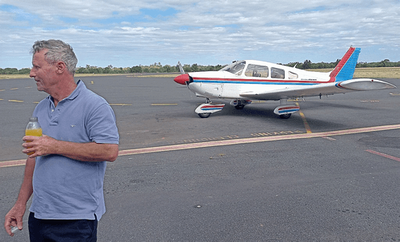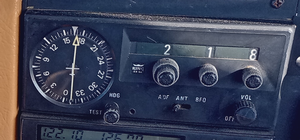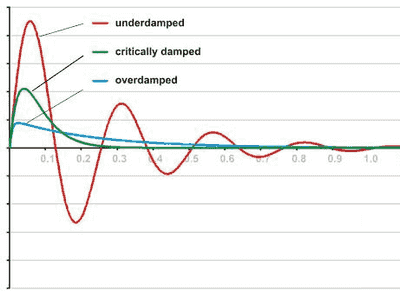-
Posts
3,323 -
Joined
-
Last visited
-
Days Won
39
Content Type
Profiles
Forums
Gallery
Downloads
Blogs
Events
Store
Aircraft
Resources
Tutorials
Articles
Classifieds
Movies
Books
Community Map
Quizzes
Everything posted by RFguy
-
Jab- IMO in helpful / benign conditions, if the minimum airspeed is nailed (experienced pilot with experience in aircraft)) then that can be landed 'STOL'. but if the conditions vary from helpful, (IMO) there is no way you can hold that required minimum airspeed during final approach for the short landing without hazard. Generally the aircraft (J230) is going to want at least 37 kts when in the flare, stall horn blaring, nose up steep.... so, compared to an aircraft that prefers to land at 25 to 30 kts, you are behind the ball....... That's the book method, anyway. I guess another STOL method might be a steep descent at idle in a full flap slip with a rather abrupt , well timed and critical performed energy exchange flare, (sounds more like a helicopter autorotation landing) but that's a precision bit of work, also. (getting them to finally stop is another thing with the average brakes)
-
IMO the jab wing doesnt lend itself to STOL ops. sort of the opposite... Will glide forever right down to the bitter end. Buy a Thruster, Ninjya, Sav , Zenith, Rans etc etc etc if you need STOL. want and need two different things. Compared to the high wings I am yet to get as 'enthusiastic' on wing down with the Archer mainly because I am not quite sure yet (insufficient time on type) to exactly how close the wing gets to the ground. BUT I suspect with the very wide stance of the Archer's mains, I expect the main will contact way before any crazy angle is reached on roll. IE in the Jab, Brumby etc, in a wing down X wind landing, I can see exactly where my main gear and wing I am putting down is. It's (educated) guess work in the low wing. did 5 circuits today (Archer) with 15 kts all Xwind.....
-
right.... SO confirm 1) when valid signal present, either radio green 'receive active' LED is lit (indicating receiving a signal), and signal from a local portable or something , but NO audio? 2) open radio squelch (like pull icom vol knob) , do you hear noise + green activity LED lit ? (if fn available) 3) transmit voice on either radio is heard by another radio elsewhere ? It is like there is a remote mute or audio suppression active on a radio pin. or intercom 23,24,25 Can you connect up an earphone between the radio output and ground (IE radio output at the back of the switch) ? Need to verify audio is present at the output of the radios before continuing. an earphone etc will work. glen
-
mmmm Is this an external intercom to the radios, or two radios wired up with a switch, or paralleled outputs or inputs ???? Please provide a mud map ! thanks glen.
-
or a six engined flying boat made out of wood ?
-
Jabiru will need to get costs in check I think if they want to remain competitive. The J170 as a flying school machine now pricing provides for many options from other mfrs in that price range. you might as well buy a used foxbat or brumby for training. There are alot of J160/J170s in the marketplace, its possible that the market is saturated. Jabiru airframes tend to last forever (even if pranged and repaired ) so maybe there are simply enough J170s in flying schools and flyingn schools are peaked. The J230 is the only genuine, fast-ish , well CG behaved load carrier in RAaus class... hence its attractiveness. Now if they'd offer a 912 / 914 power plant, that would be a killer. and sell twice as many.
-
which way you go sort of boxed by whether you will go barb hose clamped or AN series. AN is nice but given the low pressure ( < 10 psi) pos and neg, I beleive the barb fittings are entirely adaquate. I would NOT skimp on the sizes of the hoses on the suction side (engine to cooler, cooler to can, and ensure they cannot suck in / collapse. Clearly (industry experience) the native rotax fitting sizes are acceptable for short runs of tube. The cooler likely dominates the suction tension. If in a cool climate Suggest an oil thermostat like a Denali, available with different fittings, mine has 1/2 NPT in the body, there are other sizes
-
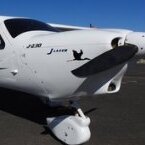
Transponder Testing/Commissioning
RFguy replied to skippydiesel's topic in Instruments, Radios and Electronics
ahhhh. right.... I cant see how a machine test can emulate flying conditions, given the way the airspeed is 'collected' , and all the variabilities. Flying up and down a course is not too demanding.... -

Transponder Testing/Commissioning
RFguy replied to skippydiesel's topic in Instruments, Radios and Electronics
How did they generate calibrated airspeed- some sort of transducer/ jig applied to the tubes or was inferred by flying ? I dont think this is necessary - since the aircraft will have its own CAS-IAS chart for its airspeed readout, and this is an independent system. That is a LAME/L2 job every two years in RAAUS I thought . As for checking if the GPS in the transponder was reading correctly- that's a load of crap IMO, use of a TSO 199 GPS means it will not readout errors without displaying an error flag- IE the GPS system in those is self aware of errors and checking. https://www.icao.int/APAC/Meetings/2015 ADSBSITF14/SP08b_FAA TABS briefing.pdf TSO-C199 Requirements • Cannot transmit false or misleading information • SDA=1 (1x10-3 or better) • NACp=9 (30 meters or better) • NACv=1 (10 m/s or better) • NIC=6 (0.5 NM or better) • SIL=1 (1x10-3 or better) • Detect Step errors greater than 700 meters • Capable of using SBAS integrity -
If you need space and payload..... and speed... 700kg J230D. hard to beat in RAaus. 80kg in the back no issue.... 620kg with full fuel (140 ltrs + 2 pax) ... Centre of Lift of wing is over the "BAGS 1" so CG is generally always in range and hard to screw up . and you have the huge back door (that leaks ha ha) and flies better with weight behind you, also. Take a look at other airplanes CG envelopes in various configurations.
-
Goolagong is not "God's county". Kingaroy is "God's country".
-
I'd stay with those AN fittings on the ends of the M22 from memory Setrab interface. efisolutions in QLD have a good range, and you can find other misc items from Sparesbox and other car performance shops. Quite common. SOunds like skippy has all push on. Pressure is low (and negative on the oil cooler side ! ) in the rotax system, suits push on.... Marty what connectors are on your oil can ? I found that interface to the AN oil cooler a bit of a pain but findable (M18 from memory IMBW) -glen.
-
Wednesday, Thursday : Thruster88 and I flew my new Archer down from Charters Towers to Cowra, made it a two day event. Could be done in one but the LONG day would remove the fun. We have never seen any of central queensland, so this was a good chance to look around. Locals at airports very friendly. Overnighted at Cunnamulla. Nice full river running through it. Plenty of greenery around. 'soaring' techniques I learned during training with Rob Glenn in a hot summer years ago now - to see a thermal present by increased VSI , then pull the nose up slow and try and stay it in as long as possible. Required technique when trying to climb from 7500 to 9500 to take a look in the Archer. Turns a rather anemic 400 fpm into 800 fpm. I'll take that- it is the only thing is life truly free. and almost as good the big Jab LOL. I love NDBs. Such a great facility. Much more engaging than GNSS. and Thruster88 gets to practice his morse code.
-

Transponder Testing/Commissioning
RFguy replied to skippydiesel's topic in Instruments, Radios and Electronics
test the ASI ? sounds like he was trying to bill extra hours. unless your aircraft was (over) due for testing as normally required is it every 2 years for a RAaus ? and no need to test the GPS, is is guaranteed to be accurate by its certification. (again might be a test). There is a CASA instrument that stipulates what needs to be tested after what changes are made, I will have a look at it, others might know. -

Optimum CG • discussion on 'Pilots of America' forum
RFguy replied to Garfly's topic in AUS/NZ General Discussion
What was recovery ? move all the drinks trolleys to the front of the aircraft ? -

Optimum CG • discussion on 'Pilots of America' forum
RFguy replied to Garfly's topic in AUS/NZ General Discussion
Putting aside CG location, recovery is usually about two things. Elevator authority that situation, throttle position. Certain combinations will be unrecoverable. But I think you know that , and that's not quite the question you are after. Recovery may not be possible if the CG is aft of the COL and the elevator gets locked into an aerodynamic situation where it (continues) to have no authority (IE no ability to pitch the aircraft so to reduce the AoA of the main wing below stall angle) . Take a look at some of the aircraft with specified NORMAL, UTILITY and AEROBATIC category weights and CG limits. Aero cat takes into account the higher likelihood of getting the aircraft into a more difficult to recover situation/configuration. So, its possible but unlikely to get NORMAL aircraft into difficult (recovery) situations, but highly likely with AEROBATIC. That and limits of airframe G force limits (weight). Nev (since you flew them) I was reading about 727s years ago in one of 'Jobs books where the recovery of the T tail in some attitudes was problematic, and this was new to many.... -

Optimum CG • discussion on 'Pilots of America' forum
RFguy replied to Garfly's topic in AUS/NZ General Discussion
The less the tail has to do the better for efficiency. Bruce do you recall, for those gliders when set at the "design aft-limit" , in response to a impulse pitch input (up or down step), in terms of dynamic pitch stability, were they over damped (return very slowly to original attitude) or underdamped (borderline unstable probably aft CG for that airspeed/loading) IE entered an oscillatory condition like a car spring without a damper ) or somewhere in between ? -

Optimum CG • discussion on 'Pilots of America' forum
RFguy replied to Garfly's topic in AUS/NZ General Discussion
It's interesting to examine NORMAL or UTILITY category aft (and fore) CG limits if provided. Nev you are right an inch on a sailplane is (generally) alot less (% MAC) than an inch on a short empanage powered fixedwing. Bruce, is the fastest way down in a Libelle to induce a nose down spin ? -

Leighton Beach WA light aircraft ditched 20.04.2023
RFguy replied to trailer's topic in Aircraft Incidents and Accidents
I dont think it stalled at all, looks like a perfect flare and land on the ocean, with enough energy / airspeed to get a GOOD flare (lots of tail authority) -

Anyone using automotive cable for their starter motors?
RFguy replied to danny_galaga's topic in Engines and Props
Maybe, except there are many variations on crimp connectors- many crimp lugs require to get pinned from underneath- one side is a hemisphere (sortof) and the other side a square pin push Depends if you are trying to get a swaged joint, etc - many variations. Before substituting a makeshift die, try and get a look at the real tool. -

On fuel bulk storage, getting clean fuel and so on.
RFguy replied to old man emu's topic in AUS/NZ General Discussion
do that. The twin filter Mr Funnel I have will keep up with a 20 litre jerry being poured in at max rate... Ideally, you need to fashion a collar for it to sit on- stops it falling over slightly, I use a I think 50mm long , 6" diameter bit of poly pipe with a antyi-scratch bead of edging on the bottom. . the collar becomes necessary as the things starts to slosh around when the pour rate is high -

On fuel bulk storage, getting clean fuel and so on.
RFguy replied to old man emu's topic in AUS/NZ General Discussion
Low speeds is bad and hard on the gearbox and everything, Rotax specifically recommend minimum time at low RPM. Probably depends of you have fuel that is likely to varnish up, or evap (ethanol etc) in the bowls, or not, to whether you want to starve the bowls dry on shutdown me thinks. Mr Funnel comment- buy the one with dual filters- otherwise it will not keep up with a 20 litre jerry pour. -
But not too many of them (rotax) stop. The failures of the ignition modules though was a real FU by Rotax and shows where they are good, and where they are not. Stacking two ignition modules hard on top of eachother in an area of high temperature was just asking for trouble. A 10mm gap between them would have ensured cooling. In my opinion, electronics is an area NOT to trust Rotax due to their demonstrated incompetance. However, they have demonstrated competance (to me) with the hard to get right stuff like pistons, heads, cooling, gearbox. The inlet manifold is a bit of a compromise (mixture variance front and rear at low gas velocities ) but its bearable. The dual carb is fiddly but acceptable.
-

E-Props ...who has first hand experience with these
RFguy replied to eightyknots's topic in Engines and Props
cant compare unless airspeed /efficiency is in the picture. I went four blade for rotax because of superior takeoff performance- more blades, less blade loading per blade and not as far into 'stall' if you like , IE AoA per blade lower , ---at low airspeeds much less than the screw speed. Exact performance will depend a bit at what drag you end up with and IE what RPM your end up with. Little / no penalty for 4 versus 2 blades with the Eprop at cruise speed. That's the advantage I like. AND Eprop will get you all this data... -

Anyone using automotive cable for their starter motors?
RFguy replied to danny_galaga's topic in Engines and Props
CRIMP, for sure. soldering creates a brittle, heat treated joint. Suggest as high strand count as you can get. Now, as for wire : and, may I quote AC43 : There is no need to speculate. AC43.13-1B , https://www.faa.gov/documentlibrary/media/advisory_circular/ac_43.13-1b_w-chg1.pdf CHAPTER 11 - AIRCRAFT ELECTRICAL SYSTEMS Section 6 : Aircraft Electrical Wire Selection. Section 14 : Terminal Repairs. 11-174 General 11-178 Crimp on Terminal Lugs I strongly suggest users modify and maintain their LSA airplane electrics to AC43.13. There is about 20 good pages to read between Section 6 and Section 17. That been said, I'd suggest a high strand count cable with insulation good for fire temps, and appropriate crimp lugs for that cable, and a suitable crimp tool , or fashioned die in a vice to generate the impression.






